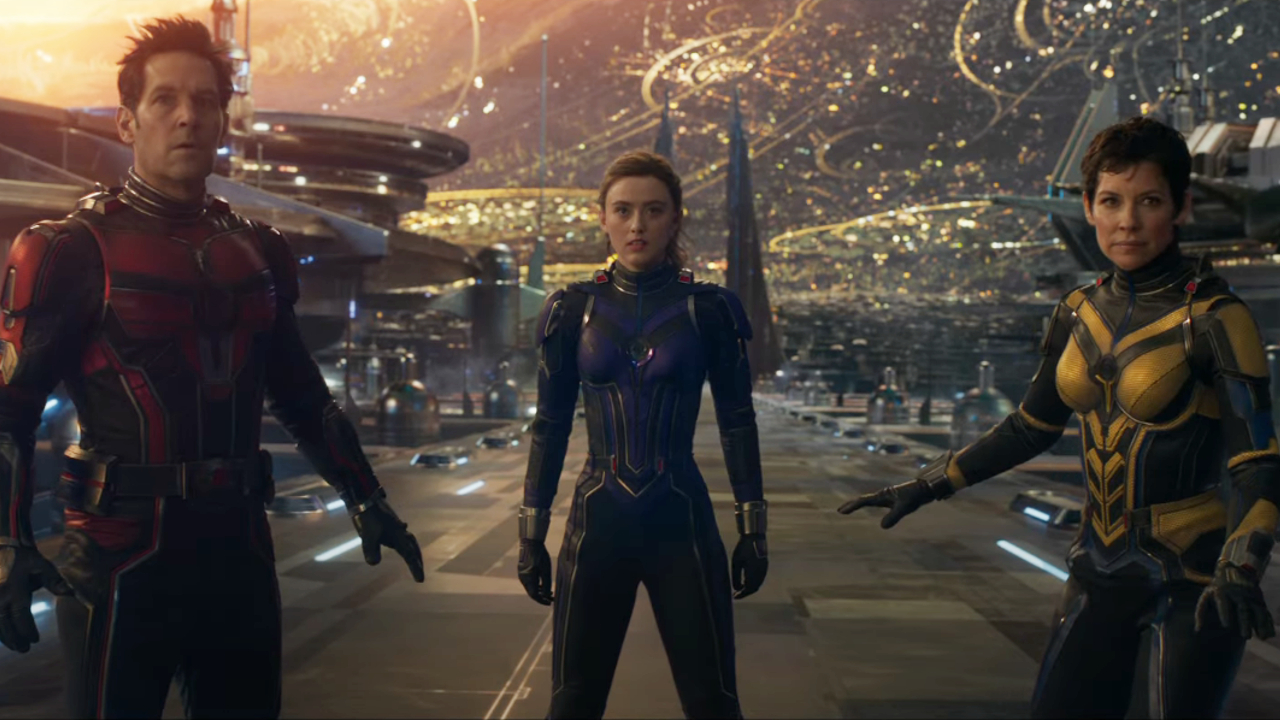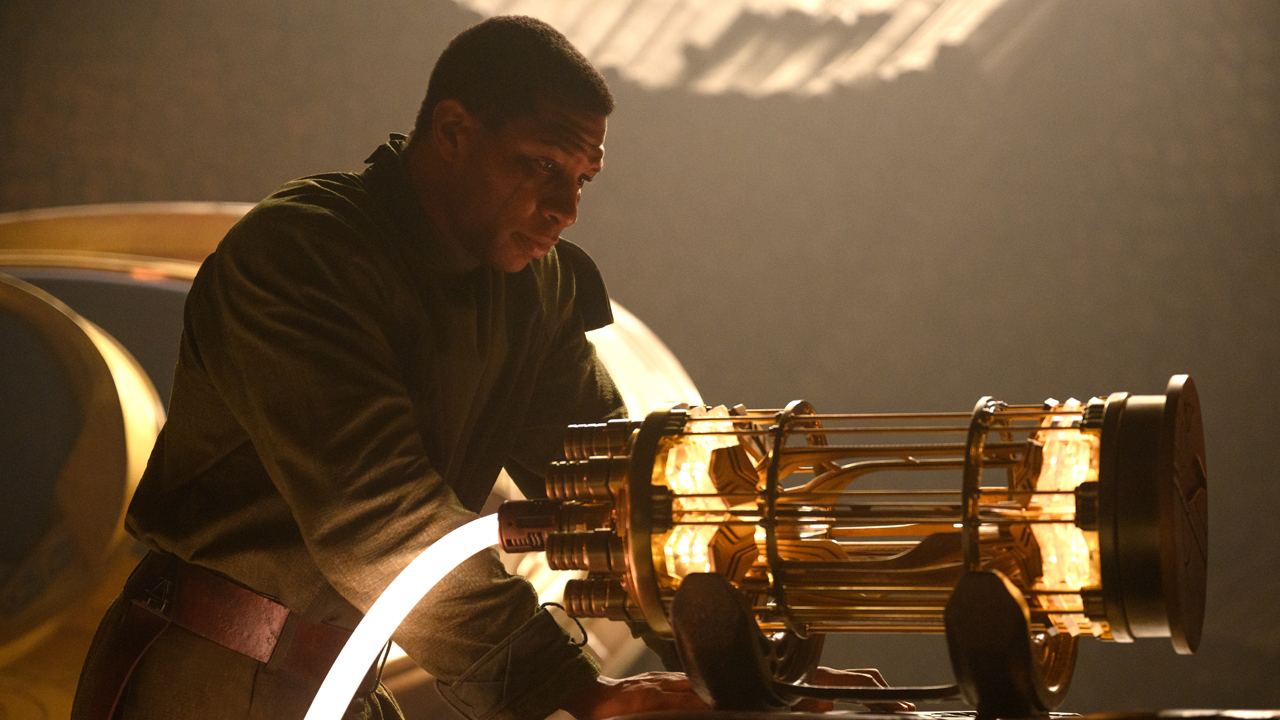How The Quantum Realm Works In The Marvel Cinematic Universe
Let's break things down on a subatomic level...

SPOILER WARNING: The following article contains major spoilers for Ant-Man and the Wasp: Quantumania! If you have yet to watch the new Marvel movie, proceed at your own risk!
Over the course of the past decade and a half, the Marvel Cinematic Universe has taken us to worlds, galaxies and even universes that are dazzling, fantastical and oftentimes confusing as hell, with rules and possibilities we mere mortals can only begin to understand. One of those visually striking and mentally daunting locations that has received a lot of attention over the years is the Quantum Realm, which has been consequential in five of the best Marvel movies to date. The most recent adventure, Ant-Man and the Wasp: Quantumania, spent the most amount of time in the microscopic universe.
So after spending so much time in Quantum Realm over the years, most of it with Paul Rudd’s Scott Lang, we can piece together how the hidden universe beneath our own works by using examples from the various MCU titles set within the extremely small, yet imposingly vast realm.

The Quantum Realm Is A Universe Of Its Own With Limitless Worlds And Layers
In the opening minutes of Ant-Man and the Wasp: Quantumania, Kang the Conqueror (Jonathan Majors) asks a single question upon being saved by Janet van Dyne (Michelle Pfeiffer) in the Quantum Realm: “What is this place?” Though a simple enough question, the answer is far more complex, one that could take a doctorate in quantum physics to explain in full, but even then still be hard to understand.
In the simplest terms, the Quantum Realm is a secret universe like our own, in that it has a limitless number of systems, worlds and layers. But unlike our own universe (and the main Earth-616 reality in the MCU), life, and reality itself, is very different, with unimaginable wonders and horrors awaiting, as Cassie Lang (Kathryn Newton), Hope van Dyne (Evangeline Lilly), and Hank Pym (Michael Douglas) learn upon venturing into this microverse for the first time.

Time Passes Differently In The Quantum Realm
During the Ant-Man and the Wasp post-credits scene, Scott Lang was left trapped in the Quantum Realm after Hope, Janet and Hank (his way out) were turned to dust as part of Thanos’ master plan. And though everyone in the regular world spent the next five years in a state of shared grief trying to make sense of the Avengers’ failure to stop the Mad Titan, Scott revealed that to him, it was only five hours.
See, time passes differently in the Quantum Realm than it does in our own universe. While the exact ratio is never fully explained, and it isn’t revealed if the different layers of the microverse experience time differently than others (like the way time worked in Christopher Nolan’s Interstellar or Inception), we do know that there are some major differences between the notion of time in our world than the one dominated by Kang the Conqueror.
Your Daily Blend of Entertainment News

The Quantum Realm Can Be Accessed In A Variety Of Ways
There isn’t one exclusive way to reach the Quantum Realm, as various Marvel characters have used an assortment of ways to use the microverse in one way or another. The first method of shrinking down to free oneself to reach the infinite possibilities of the Quantum Realm was introduced in Ant-Man, when Scott Lang shrank down to subatomic size in order to sabotage Darren Cross’ (Corey Stoll) Yellowjacket suit (more on him in a bit) before disappearing into an even smaller scale. Though viewed as a death sentence, Scott helped prove that one could escape after returning to the regular-sized world.

Ant-Man (2015)
Doctor Strange (2016)
Ant-Man and the Wasp (2018)
Avengers: Endgame (2019)
Ant-Man and the Wasp: Quantumania (2023)
Similarly, in Avengers: Endgame, what was left of Earth’s Mightiest Heroes took the technology that Hank Pym built years earlier and used it to create a time machine that allowed them to drop into different points in time by briefly traversing the Quantum Realm. Cassie Lang’s device in Ant-Man and the Wasp: Quantumania sent a message into the realm, resulting in everyone in the room being sucked into a portal, transporting them to the microscopic universe.
There's also at least one example of magic being used to reach the Quantum Realm, though only briefly. Stephen Strange (Benedict Cumberbatch) crossed through the Quantum Realm in Doctor Strange when he was bouncing between the different realities, but again, this was only for a few brief moments.

A Special Suit Is Required To Enter Or Exit The Quantum Realm
When crossing into the Quantum Realm, at least in any of the movies before Ant-Man and the Wasp: Quantumania, a special suit is required to enter or exit the subatomic universe due to the stresses shrinking on the human body. This explains the suit Hank Pym wore long ago and the one Scott Lang wears now, as well as those sweet time travel outfits used by Earth’s Mightiest Heroes in Avengers: Endgame. The suit, combined with the helmet, help prevent a situation like Darren Cross having his body thoroughly screwed up after his encounter with Ant-Man that resulted in the villain becoming MODOK and looking crazy as hell.
But again, Ant-Man and the Wasp: Quantumania broke this rule at just about every turn, with characters entering the Quantum Realm without a suit (like Hank Pym and Janet van Dyne) and others just opening and closing their visors without anything happening on a physiological level.

The Quantum Realm Could Be Viewed As A Prison
The Quantum Realm, while magical, fantastical and extraordinary, could be viewed as a prison, like the subatomic version of Alcatraz Island or even Manhattan in Escape from New York. Once you are sent down to the scale of the microverse, you are almost guaranteed to spend the rest of your life (or eternity) trapped there without help from the outside world, whether that be someone coming to help you or you tricking someone into letting you out.
In Ant-Man and the Wasp: Quantumania, it is revealed that Kang the Conqueror didn’t crashland in the Quantum Realm, but instead was sent there to live in exile after the Council of Kangs (his variants) deemed him too formidable of a threat. Though he was able to fix his technology that allowed him to take over the Quantum Realm, Kang lacked a method of escape and remained stuck in his prison after Janet van Dyne sabotaged his power core. That is, until Cassie Lang sent down her communication to the subatomic space.
The idea of a prison also came up in previous movies, including the first two Ant-Man titles, where it was revealed Janet was trapped in the Quantum Realm for 30 years before being rescued. An actual prison, like the one revealed in the Quantumania script leaks, was also used in the 2023 Marvel movie.
Hopefully this helps make sense of the Quantum Realm within the Marvel Cinematic Universe. With the way things wrapped up in the Ant-Man and the Wasp: Quantumania ending, as well as those two post-credit sequences, there’s a good chance we’ll be exploring the subatomic universe again in some of the upcoming Marvel movies.

Philip grew up in Louisiana (not New Orleans) before moving to St. Louis after graduating from Louisiana State University-Shreveport. When he's not writing about movies or television, Philip can be found being chased by his three kids, telling his dogs to stop barking at the mailman, or chatting about professional wrestling to his wife. Writing gigs with school newspapers, multiple daily newspapers, and other varied job experiences led him to this point where he actually gets to write about movies, shows, wrestling, and documentaries (which is a huge win in his eyes). If the stars properly align, he will talk about For Love Of The Game being the best baseball movie of all time.
